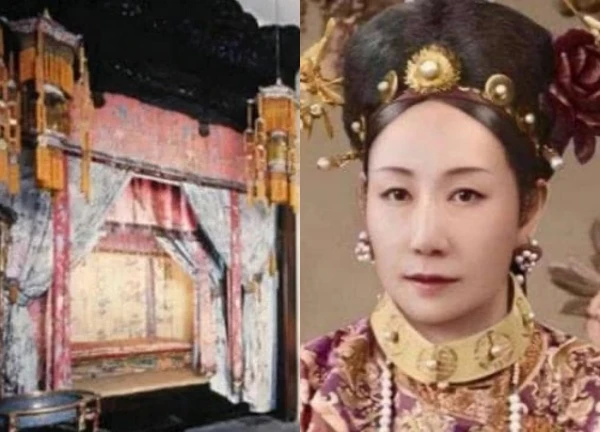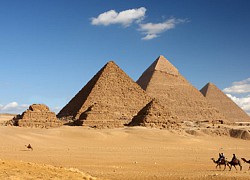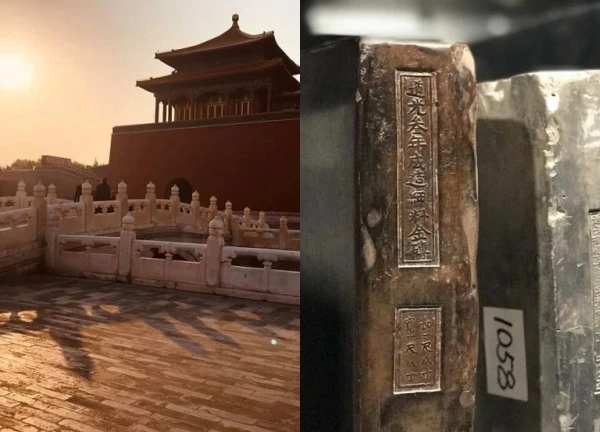Empress Dowager Cixi's bed was carved by Westerners, the content is shocking!

2 | 0 Discuss | Share
A team of researchers from Italy and Scotland claim to have discovered traces of the legendary Temple of Amenti inside a "vast underground city" located beneath the Great Pyramid of Giza.
This bold discovery is causing astonishment and controversy among world archaeologists.
According to the research team’s spokesperson, Nicole Ciccolo, the latest discovery is the result of a large-scale research project called Project Khafre, led by Professor Corrado Malanga from the University of Pisa (Italy) and Dr Filippo Biondi from the University of Strathclyde (Scotland). The team focused on the Khafre Pyramid – the second largest structure on the Giza Plateau.
Using Synthetic Aperture Radar (SAR) technology, the team identified five small structures inside the pyramid that resemble chambers. One of the structures contained a sarcophagus that had previously been mistaken for a Pharaoh’s tomb. According to the researchers, the five previously unknown structures are located at the center of the pyramid and are linked to passages that lead below the ground. These passages are believed to lead to hidden chambers and wells beneath the 4,500-year-old wonder.
Based on the collected data, the research team said that the electromagnetic signals were converted into sound and from there built a map of a vast underground infrastructure system, stretching thousands of meters underground.
In particular, they discovered eight large vertical structures – hypothesized to be shafts or shafts – that could extend up to 2,000 meters horizontally and 600 meters deep. While the team has not yet drawn any conclusions about the purpose of these large-scale structures, they revealed that they will continue to analyze them and may even excavate them to verify their “artificial nature.â€
The radar data was then processed to create a preliminary three-dimensional (3D) model of what lies beneath the pyramid complex, including eight shafts and spiraling passageways that lead deep into the earth. As the 3D model was expanded, the initial images revealed that “beneath the pyramid is a structure that can be described as a real underground city,†according to Professor Malanga.
"There is a very strong correlation between the layout and characteristics of the discovered underground chambers and descriptions of the legendary Temple of Amenti in ancient myths," said spokesman Ciccolo.
The Temple of Amenti has long been thought to contain the “Chamber of Records†– a mysterious underground location, located beneath the pyramids or the Great Sphinx, believed to contain ancient texts and knowledge about the Egyptian and other ancient civilizations. “These new archaeological discoveries could reshape our understanding of the sacred terrain of ancient Egypt, providing spatial coordinates for previously unknown and unexplored underground structures,†Ciccolo said.
However, along with expectations, this discovery also met with skepticism from the scientific community. Some experts warned that current radar technology is not sophisticated enough to draw such firm conclusions.
Professor Lawrence Conyers, a radar expert from the University of Denver, said the claims were "exaggerated." He said that while there was a possibility that small structures existed below the surface, they could be traces of ancient civilizations that were present in the area before the pyramids were built.
"It was sacred land long before the Egyptians built the pyramids," Mr Conyers told the Daily Mail. But the controversial claims continue to spark global interest, particularly among archaeologists and Egyptian mythology enthusiasts, because of the potential for access to ancient texts or the lost secrets of the ancient civilization.
Djoser – Egypt's oldest iconic pyramid – may have been built with the help of a unique hydraulic lift system, according to a study published on August 5, 2024 in the open-access journal PLOS ONE by Xavier Landreau from the CEA Institute of Paleontology, France, and colleagues.
New research suggests water may have flowed into two shafts located inside the pyramid itself – water that could have been used to raise and lower rafts carrying the stone blocks.
The Pyramid of Djoser, also known as the step pyramid, is believed to have been built around 2680 BC as a tomb for the pharaoh Djoser of the Third Dynasty of Egypt. However, the exact method of construction of the pyramid remains a mystery to this day.
In this new interdisciplinary analysis, the researchers suggest that the area surrounding nearby Gisr el-Mudir – a previously unexplained structure – may have acted as a dam to collect water and sediment.
Additionally, a series of chambers dug into the ground outside the pyramid could have been used as a water treatment facility, allowing sediment to settle as water passed through each successive chamber.
The water could then flow into the pyramid shafts themselves, where the upward force of the water could help carry the massive blocks of stone.
More research is needed to understand how water could have flowed through the shafts, as well as how much water was available on the terrain at that point in Earth's history. But the authors of the new study suggest that while other construction methods like ramps may have been used to support the pyramid's construction, hydraulic lift systems could have also been used to support the construction process if there was enough water available.
"Thanks to the collaboration between the newly established research institute, Paleotechnic, and several national laboratories (INRAE, University of Orléans), we discovered a dam, a water treatment facility and a hydraulic elevator, which may have helped build the Saqqara step pyramid," the authors added.
"This work opens a new research direction for the scientific community: Using hydraulic power to build pyramids for the Egyptian pharaohs," the authors added.
Why are the 3 Egyptian pyramids perfectly aligned?  Hoàng Phúc07:57:03 10/04/2022That is the question of all mankind when standing in front of this great work! For centuries, the pyramids of Giza in Egypt have baffled modern researchers - not just the underground chambers and mysteries surrounding them, but also how the ancient Egyptians got there. It is...
Hoàng Phúc07:57:03 10/04/2022That is the question of all mankind when standing in front of this great work! For centuries, the pyramids of Giza in Egypt have baffled modern researchers - not just the underground chambers and mysteries surrounding them, but also how the ancient Egyptians got there. It is...

2 | 0 Discuss | Share

2 | 0 Discuss | Share

3 | 0 Discuss | Share

3 | 0 Discuss | Share

3 | 0 Discuss | Share

5 | 0 Discuss | Share

2 | 0 Discuss | Share

3 | 0 Discuss | Share

3 | 0 Discuss | Share

2 | 0 Discuss | Share

1 | 0 Discuss | Share

3 | 0 Discuss | Share




1 | 0 Discuss | Report